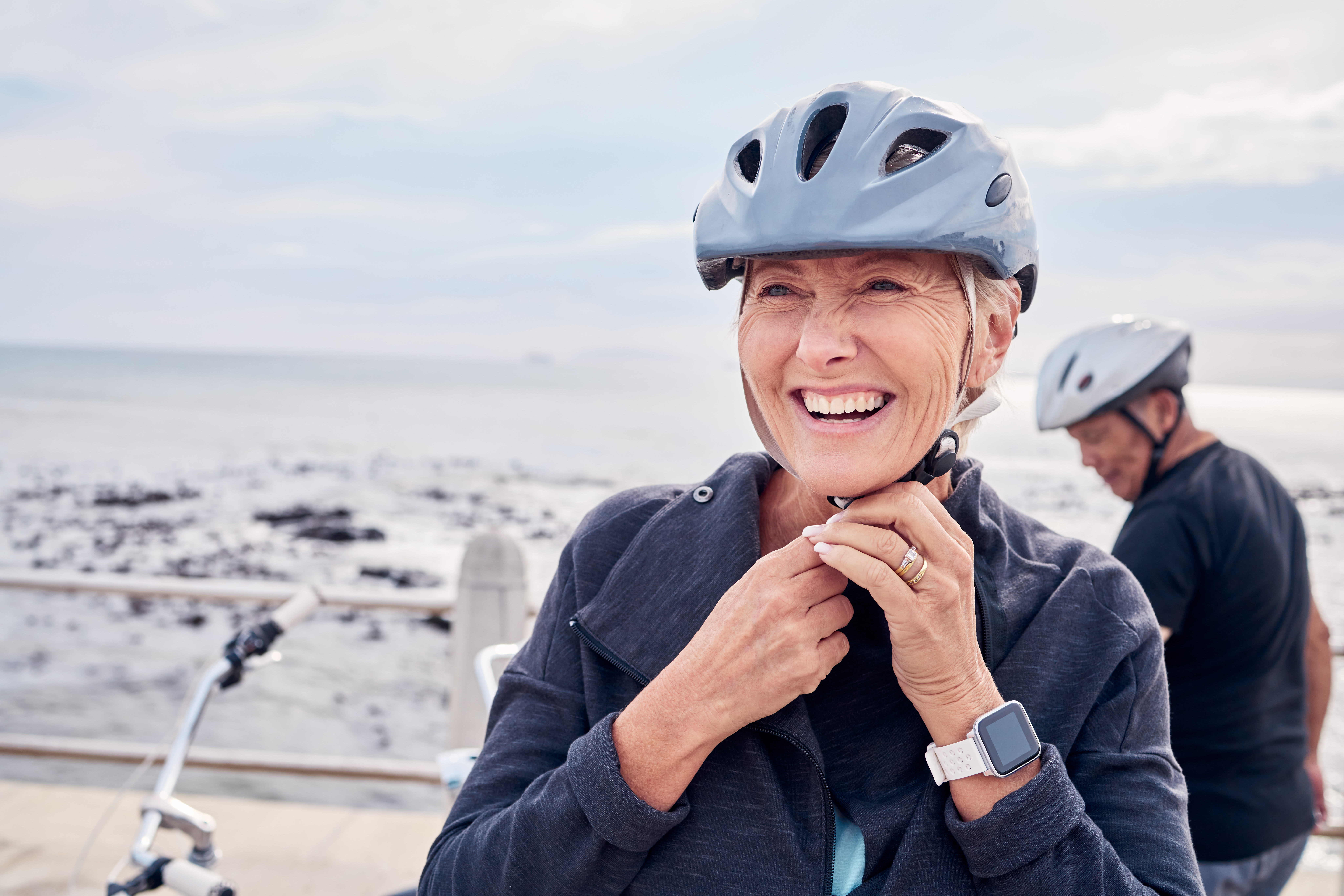Neat Little Guide — 6 minutes
Cycling: Benefits and Treatments for a Smooth Ride
Cycling is enjoying phenomenal growth in Quebec. You only need to look around to see the increasing number of enthusiasts, the regular opening of new bike paths and the widespread popularity of cycling tours. This activity is clearly a powerful ally for our mental and physical health.

Cycling is good for physical health
According to Cyclo Nord-Sud,[1] cycling helps you:
- Develop and work certain large muscles, such as those of the thighs and buttocks.
- Improve your balance and posture, and prevent falls.
- Decrease cardiovascular problems.
- Reduce sedentary lifestyles and obesity.
- Increase life expectancy.
Cycling is good for mental health
- Improves sleep quality.
- Enhances well-being and boosts energy levels during the day.
- Reduces risk of depression and anxiety.
- Promotes better brain function.
Cycling is good for the environment
Even electric bikes, when used in place of cars, help reduce the greenhouse gases (GHGs) generated by combustion engines.
Health risks
Health risks linked to cycling fall into two categories: traumatic injuries and chronic injuries. Traumatic injuries include concussion, wounds, fractures and dislocations resulting from a fall. A number of measures can help reduce these risks or minimize their consequences:
- Follow the rules of the road.
- Make sure you are seen and heard.
- Wear a helmet.
- Keep your bike well maintained.
- Use protected cycle paths.
- Stay in good physical condition.
- Recognize and respect your physical limits.
According to the Ordre professionnel de la physiothérapie du Québec,[2] chronic problems linked to cycling, such as tendonitis in the lower limbs, and back or neck pain, are mainly due to overuse or misuse of the bicycle. Here are a few contributing factors:
- Poor posture and dynamic alignment (e.g. knees turned inward)
- Inadequate physical condition for the type of activity
- Muscular imbalance possibly due to a previous injury
- Unsuitable training regimen (too intense)
- Improper pedalling technique
Cycling and the joints
Mountain biking is the main cause of joint damage, due to overuse or misuse of the bicycle. However, regardless of the type of cycling you do, this type of injury generally responds well to treatment with cortisone infiltration.
Les infiltrations pour les douleurs articulaires
Mountain biking is the main cause of joint damage, due to overuse or misuse of the bicycle. However, regardless of the type of cycling you do, this type of injury generally responds well to treatment with cortisone infiltration.
Infiltration involves injecting a corticosteroid (cortisone), viscosupplement (hyaluronic acid) or platelet-rich plasma (PRP) directly into a joint to reduce inflammation or pain.
For maximum efficiency, the infiltration must be as close as possible to the affected area. X-ray techniques such as ultrasound and fluoroscopy enable the medication to be injected with high precision.
The knees, shoulders, wrists and elbows are among the joints most frequently used and affected, especially when mountain biking.
A local anesthetic can be injected at the site where the needle is inserted in order to reduce discomfort during the procedure considerably. However, you may feel some pain for the first two days. This is a normal reaction of the inflamed area, referred to as “flare-up.”
The speed and duration of the treatment vary depending on the problem being treated and the product infiltrated. Cortisone offers the quickest effect (one to two days), while the effects of hyaluronic acid and PRP take several weeks to be felt. The effect of cortisone generally lasts one to three months, while that of hyaluronic acid and PRP is longer (up to 12 months, sometimes more).
This depends mainly on the type and site of the inflammation. Infiltrations are effective in more than 70% of cases. A second infiltration may be attempted if the first one proves unsuccessful.
We recommend a maximum of three to four cortisone infiltrations per year at the same site. Depending on the type of hyaluronic acid injection, a second injection may be needed shortly after. Finally, PRP infiltrations are repeated whenever the pain returns, usually once per year.
Cycling is an activity that people of all ages can enjoy and does not require outstanding physical condition – as long as you have a properly adjusted bike, wear a helmet and respect your physical limits. Like any other sport, it involves certain risks, many of which are easily avoidable. Cycling is all about staying healthy and protecting the environment, without working up too much of a sweat!
For professional support, we’re here.
We offer services that can help your doctor diagnose musculoskeletal disorders and determine the right treatment.
Do you have a medical prescription for an infiltration? Book an online appointment or contact Biron Health Group Customer Service at1 833 590-2714.
Sources4
- Cyclo Nord-Sud. “Les bienfaits du vélo,” https://cyclonordsud.org/pedagogie/les-bienfaits-du-velo/, (accessed on June 3, 2024).
- Ordre professionnel de la physiothérapie du Québec. “Vélo: bien se préparer pour éviter de se blesser durant la saison,” https://oppq.qc.ca/blogue/velo-bien-se-preparer-eviter-de-se-blesser-durant-saison/, (accessed on June 3, 2024).
- Arthritis Society Canada. “Summer guide to movement,” https://arthritis.ca/living-well/2022/summer-guide-to-movement, (accessed on June 3, 2024).
- B. Benoit. “Ce qu’il faut savoir sur les infiltrations de corticostéroïdes,” https://www.sacsleaf.ca/uploads/webinaires/documents/141-balado-document-resume.pdf, (accessed on June 4, 2024).
